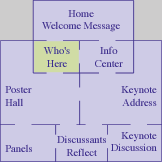|
abstract:
|
Rural school districts have been under-served by most state and federally supported reform projects. Moreover, they almost always lack the critical mass of teachers, the financial resources, and the specialized expertise to launch any systemic reforms on their own. The goal of this project is to effect major, systemic change in the elementary science instruction in 38 rural school districts in Missouri and Iowa through a five-year teacher enhancement effort.
This proposal responds to the recommendations of two previous NSF review panels and a 1999 "planning grant" that supported pilot testing of instructional materials and a meeting of teams from potential school district participants. The basic plan of the project is to form 9 cooperatives within clusters of school districts, all of whom have recently implemented or have agreed to implement instructional units from one or more of three innovative K-6 curriculum projects funded by NSF (i.e., FOSS, STC, and Insights). The teacher inservice activities proposed for this project will be patterned after those developed in the highly successful "Science Parents, Activities, and Literature" (Science PALs) project (NSF ESI 9353690), a project that utilized an incremental participation model focused on ways to adapt innovative materials to local school district needs. In Science PALs, inservice activities focused on issues of content and pedagogy, i.e., science standards, student preconceptions, balanced assessments, integrating the curriculum, teaching for understanding, and working with parents. Inservice activities focused on adapting rather than simply adopting new science curricula ensured that the Science PALs teachers were able to function as proactive, critical professionals rather than passive technicians with their newly acquired hands-on science units. Data from the PALs project show that the strategy had a positive impact on teachers' pedagogical content knowledge, students' achievement and attitudes, and parents' interest in and support of school science. The adaptation strategy is especially effective because it is not specific to any one innovative science program; the primary focus in the inservice is on making the best use of the hands-on activities to address reform standards and local needs. The strategy also provides ample opportunities for teachers to learn how to integrate science with other curricular areas..
For the proposed project, three university-based project teams facilitated by local Co-Op field coordinators will deliver summer and school-year teacher enhancement activities to an increasingly larger teacher cohort in the Co-Ops across the five project years. An initial group of one teacher per K-6 building in the participating districts and one middle school or high school science teacher per district will participate in the first cycle of summer and school year inservice activities. The university-based teams will work directly with subgroups of this initial group on the adaptation of 7 target science units (one per K-6 grades). Inservice meetings during the school year will be conducted on-site and via interactive telecommunications linking the 38 districts in the Missouri-Iowa Co-Ops to each other as well as to universities in the two states. The telecommunications system will allow experts to deliver inservice instruction to cross-sections of teachers on a variety of science, pedagogical, and special topics within and across cooperatives. This inservice cycle will be repeated in project years 2-5 with teachers from the initial year serving as advocates and advisors in their districts as increasingly larger teacher cohorts are involved each year. Each inservice cycle will focus on new science units and associated topics such as assessment, cross-curricular teaching, working with parents, etc. With most K-6 teachers using 4 science units in their instruction and with each summer/school year inservice cycle requiring 60-70 hours of involvement, it is anticipated that participating teachers will meet or likely exceed the 130 hours of inservice instruction required of LSC efforts across the five project years.
The project will enhance the content background and pedagogical content knowledge of the 1500 participating teachers, impact 28,000+ students, and build infrastructures in 38 school districts in Missouri and Iowa that will ensure continued reform and professional development long after grant funds have been expended. Additionally, this project will yield valuable information on ways to effect systemic change in rural schools nationwide.
|


